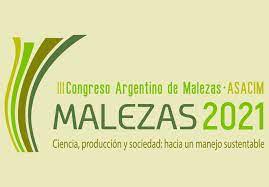Ver ítem
- xmlui.general.dspace_homeCentros Regionales y EEAsCentro Regional La Pampa - San LuisEEA AnguilPresentaciones a Congresosxmlui.ArtifactBrowser.ItemViewer.trail
- Inicio
- Centros Regionales y EEAs
- Centro Regional La Pampa - San Luis
- EEA Anguil
- Presentaciones a Congresos
- Ver ítem
Repensar los actuales modelos productivos
Resumen
Los fitosanitarios contribuyen a garantizar la producción de fibras y alimentos. Sin embargo, plantean riesgos para la salud y el medio ambiente. INTA y CREA Oeste en 2018 establecieron dos módulos experimentales con el objetivo de diseñar estrategias de manejo de cultivos para la reducción del uso de fitosanitarios. Los módulos se localizan en el partido de Trenque Lauquen (Bs. As.): El Correntino (EC) y Nueva Castilla (NC). Se definió un manejo CLÁSICO
[ver mas...]
Los fitosanitarios contribuyen a garantizar la producción de fibras y alimentos. Sin embargo, plantean riesgos para la salud y el medio ambiente. INTA y CREA Oeste en 2018 establecieron dos módulos experimentales con el objetivo de diseñar estrategias de manejo de cultivos para la reducción del uso de fitosanitarios. Los módulos se localizan en el partido de Trenque Lauquen (Bs. As.): El Correntino (EC) y Nueva Castilla (NC). Se definió un manejo CLÁSICO donde se implementan las estrategias de cultivos propias del establecimiento; y un manejo de mínimo uso (MU) de fitosanitarios y con productos de mejor perfil toxicológico y ambiental. Se implementan una combinación de herramientas y tecnologías para el manejo integrado de las malezas, plagas y enfermedades. Para la evaluación de los manejos se utilizan diferentes indicadores: productivos, económicos y ambientales (IPEST y RIPEST). En el módulo NC la estrategia de manejo MU resultó en igual o mayor producción (Silo de Maíz y soja) respecto al manejo CLÁSICO. Los márgenes brutos (U$S ha-1) obtenidos fueron: dos años favorables al manejo MU y uno al CLÁSICO. En el módulo EC, en general, la producción es menor en el manejo MU. El margen bruto (U$S ha-1) en promedio, en los 3 años (Maíz, Soja y Trigo) fueron favorables al manejo CLÁSICO. El índice RIPEST presentó valores de riesgo bajo a medio-bajo. En el módulo NC en 2019 se obtuvieron iguales valores para ambos manejos; en 2020 el índice cayó 65% y en 2021 15% en el manejo MU respecto al CLÁSICO. En el módulo EC cayó 70%, 58%, 58% y 34% en cada uno de los cultivos al comparar el manejo MU con el CLÁSICO. El IPEST Global obtenido en los dos manejos de ambos módulos resultó en valores clasificados como bajo a muy bajo potencial de impacto ambiental.
[Cerrar]
Pesticides contribute to ensure fiber and food production, but their misused pose health and
environmental risks. INTA and CREA Oeste in 2018 established two experimental trials with the objective to design crop management strategies to reduce the use of pesticides. The experimental trials are located in Trenque Lauquen department (Bs. As.): El Correntino (EC) and Nueva Castilla (NC). Two types of management were defined: CLASSIC, those that implements
[ver mas...]
Pesticides contribute to ensure fiber and food production, but their misused pose health and
environmental risks. INTA and CREA Oeste in 2018 established two experimental trials with the objective to design crop management strategies to reduce the use of pesticides. The experimental trials are located in Trenque Lauquen department (Bs. As.): El Correntino (EC) and Nueva Castilla (NC). Two types of management were defined: CLASSIC, those that implements the farm; and minimal use (MU) of pesticides, selected taking into account a better toxicological and environmental profile; combining different tools and techniques for weeds and pests
integrated management. Different indicators are used for the evaluation of the managements: Productive, Economic and Environmental (IPEST and RIPEST). In NC trial the MU management resulted in equal or greater crop production (corn silage and soybean) compared to CLASSIC management. The gross income (U$S ha-1) obtained were: two years favorable for MU and one for the CLASSIC. In EC trial, in general, the production in the MU management is lower than the CLASSIC management. The gross incomes on average, in the three years (Corn, Soybean and Wheat) were favorable for CLASSIC management. The RIPEST index presented low to mediumlow risk values. In NC trial, in 2019, similar values were obtained for both managements. In 2020 and 2021, index value fell 65% and 15% in MU with respect to CLASSIC management, respectively. In EC, index value fell 70%, 58%, 58% and 34% in each crop when comparing the MU strategy with the CLASSIC one. The Global IPEST index obtained for the two strategies resulted in values classified as low to very low potential environmental impact.
[Cerrar]

Descripción
Presentación oral
Fuente
III Congreso Argentino de Malezas “Ciencia, producción y sociedad: hacia un manejo sustentable”, 9 y 10 de junio de 2021.
Fecha
2021-06-01
Editorial
Asociación Argentina de Ciencia de las Malezas
Documentos Relacionados
Formato
pdf
Tipo de documento
documento de conferencia
Proyectos
(ver más)
INTA/2019-PE-E2-I054-001/2019-PE-E2-I054-001/AR./Gestión sostenible de fitosanitarios
Palabras Claves
Derechos de acceso
Abierto
 Excepto donde se diga explicitamente, este item se publica bajo la siguiente descripción: Creative Commons Attribution-NonCommercial-ShareAlike 2.5 Unported (CC BY-NC-SA 2.5)
Excepto donde se diga explicitamente, este item se publica bajo la siguiente descripción: Creative Commons Attribution-NonCommercial-ShareAlike 2.5 Unported (CC BY-NC-SA 2.5)


